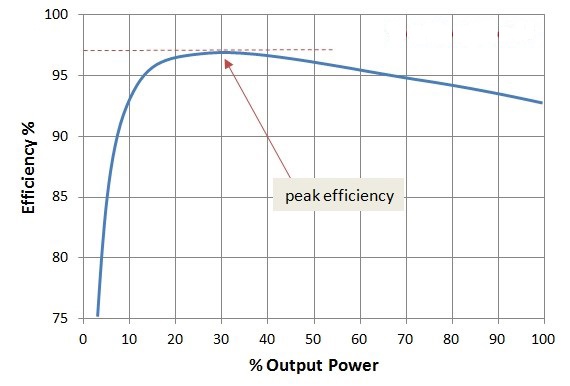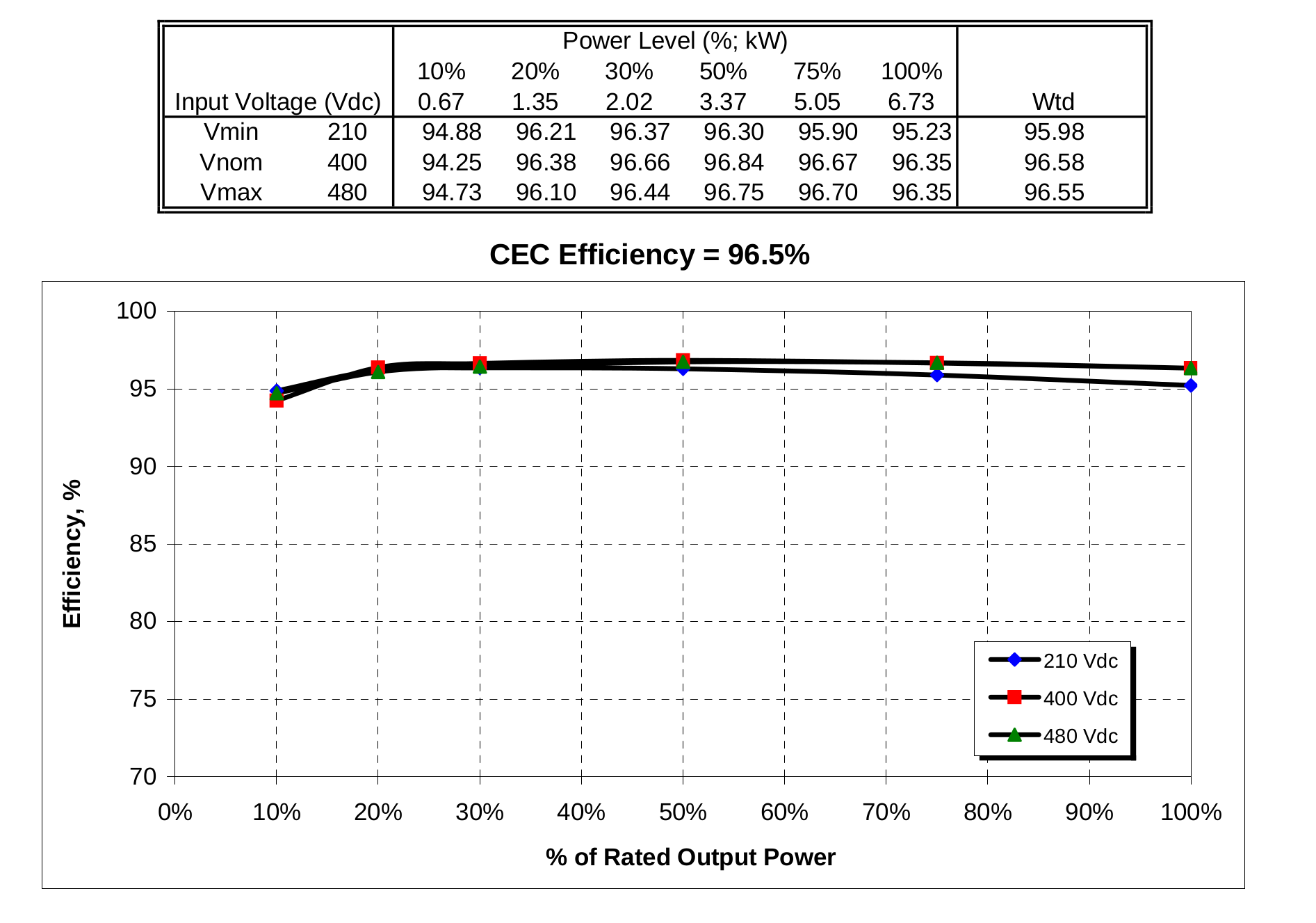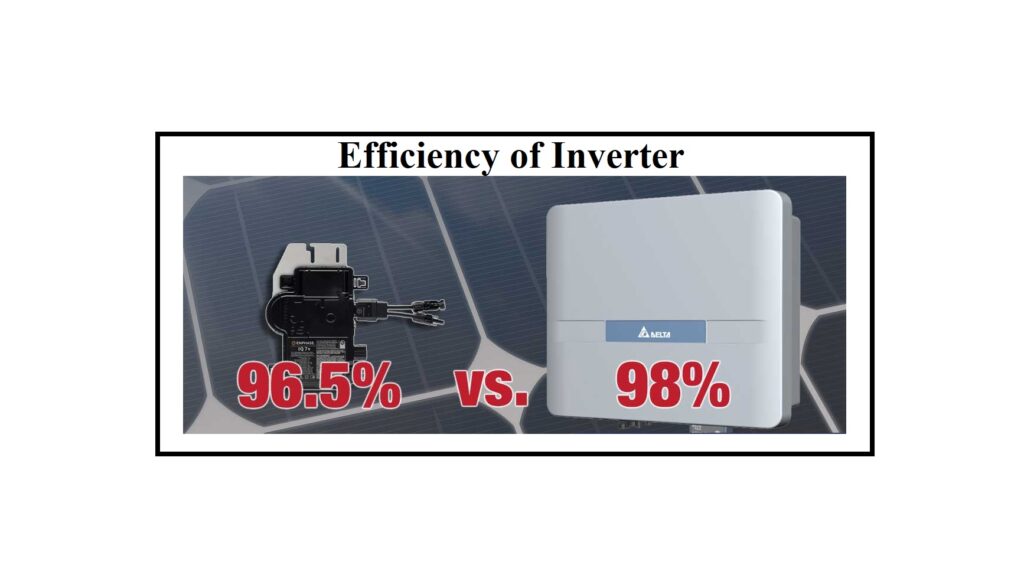The efficiency of an inverter refers to the amount of AC output power it provides for a given DC input. This normally falls between 85 and 95 percent, with 90 percent being the average. When it comes to running things like motors, efficiency is divided into two parts: inverter efficiency and waveform efficiency. With a sine wave, most motors and many electrical appliances run more efficiently and consume less electricity. A modified sine wave will often require 15% to 20% more power than a real sine wave when powering an electric motor (such as a pump or refrigerator). To evaluate genuine system efficiency, you should additionally consider the sort of loads being powered when choosing an inverter based on efficiency.
Linquip’s website contains everything you would ever need to know about inverter equipment and devices. Our Linquip team of experts is always on hand to answer any question you might have about inverters. If you wish to learn about inverters, we would recommend starting with Linquip’s article, “What Is An Inverter?“.
If you would like to take advantage of all the features available, you can also sign up as a Linquip Expert. Have you thought about writing for Linquip as a Guest Posting? You can also submit content as a guest.
What Does Efficiency of Inverter Mean?
In reality, whether it’s a solar inverter, a pure sine wave inverter, or a modified sine wave inverter, we’ll examine general power inverter efficiency here.
By efficiency, we mean how much of the electricity that passes into the inverter is converted into usable AC (nothing is ever 100 percent efficient, there will always be some losses in the system). This efficiency figure will fluctuate depending on how much power is being used at the time, with greater power resulting in higher efficiency.
When only a small amount of electricity is consumed, efficiency can range from just over 50% to well over 90% when the output is approaching the inverter’s rated output. Even if you aren’t using it for AC power, an inverter will absorb some power from your batteries. Low efficiency at low power levels happens as a result of this. Visit here to see the definition of this efficiency completely.
Types of Losses
The efficiency of an inverter refers to how much DC power is transformed to AC power, as some power is lost in one of two ways during this transition:
Standby power is used just to keep the inverter running in power mode. It’s also known as inverter power usage when there’s no load.
As a result, the efficiency of the inverter equals Pac/Pdc, where Pac denotes ac output power in watts and Pdc denotes dc input power in watts.
The normal efficiency of high-quality pure sine wave inverters ranged from 90 percent to 95 percent, while the typical efficiency of low-quality modified sine wave inverters ranged from 75 percent to 85 percent.
This power inverter efficiency number varies with inverter load power capacity, as efficiency rises and may reach its maximum value at higher load power capacity compared to lower load power capacity, provided the inverter output power capacity limit is not exceeded. In general, if the inverter is loaded less than 15%, the efficiency will be low. As a result, a good match between inverter capacity and load capacity will allow us to obtain more efficiency, which is more ac output power from the inverter for the same DC input power.

When no AC is used, a 3Kw inverter will normally take roughly 20 watts from your batteries. As a result, if you’re utilizing 20 watts of AC power, the inverter will be pulling 40 watts from the batteries, resulting in a 50 percent efficiency.
A modest 200W inverter, on the other hand, may only use 25 watts from the battery to produce a 20-watt AC output, resulting in an 80 percent efficiency.
To improve the overall efficiency of the inverter, larger devices will typically contain a feature called “Sleep Mode.” If AC power is required, a sensor within the inverter detects it. If it doesn’t, the inverter will be turned off, but it will continue to sense if electricity is required. This may generally be modified so that only turning on a modest light is enough to “turn on the inverter.”
Of course, this means that appliances cannot be left in “stand-by” mode, and some appliances with timers (e.g. washing machines) will not possibly drain enough power to keep the inverter “switched on” unless something else, such as a light, is turned on at the same time.
The wave shape and inductive loads are also crucial considerations (i.e. a device where an electrical coil is involved, which will include anything with a motor). When powering inductive loads, any waveform that is not a real sine wave (i.e. a square or modified square wave) will be less efficient – the device may use 20% more power than if utilizing a pure sine wave. This excess power demand, in addition to lowering efficiency, may harm or decrease the life of the device owing to overheating.
Efficiency of Inverter Types
There are three types of inverter efficiency, and we need to know what each one means and how they differ in order to better understand the many inverter datasheet models and manufacturers on the market:
- CEC weighted efficiency
{\eta _{CEC}}=0.04{\eta _{10}}+0.05{\eta _{20}}+0.12{\eta _{30}}+0.21{\eta _{50}}+0.53{\eta _{75}}+0.05{\eta _{100}}
- EU weighted efficiency
{\eta }_{EU}=0.03{\eta }_{5}+0.06{\eta }_{10}+0.13{\eta }_{20}+0.10{\eta }_{30}+0.48{\eta }_{50}+0.20{\eta }_{100}
Peak efficiency refers to the maximum efficiency of inverter that can be achieved at ideal output ac power, and it can be used just as a quality indicator for inverters.
European efficiency refers to inverter efficiency measured at various AC output power points and then multiplied by various weighted numbers. It is more relevant than peak efficiency since it displays how the inverter performs at various output power levels during the solar day.
California energy commission efficiency: It relates to inverter efficiency evaluated at different ac output power points, then multiplied by different weighted values, therefore, it’s similar to European efficiency, but it utilizes different multiplied weighted numbers (different calculation formula).
The importance of each AC output power level when assessing efficiency for a given inverter is the fundamental variation between European and California efficiencies.
Efficiency of Inverter Curves
The efficiency of an inverter, which affects how much of the DC power generated by a solar array is converted to AC power, isn’t always a constant number. This parameter, on the other hand, fluctuates with input DC power and voltage, with the degree of variation being unique to the inverter. The California Energy Commission (CEC) keeps track of testing results on a variety of inverters, expressing efficiency as a function of DC power at three different voltages within each inverter’s operating voltage window. The CEC data for a string inverter is provided below as an example.

The performance simulations can analyze the whole efficiency of inverter curve for devices with CEC test data, rather than using a fixed, weighted efficiency to determine DC/AC conversion losses. They use a model created by Sandia National Labs to fit a parabolic curve to the power- and voltage-dependent efficiency data. An efficiency curve will be used in the simulation by an inverter in Aurora’s component database that provides CEC data.
If a database inverter lacks CEC data and so is unable to simulate an efficiency curve, the simulation will utilize a fixed efficiency curve (the smallest of the CEC, European, and maximum efficiencies from the datasheet). Custom inverters will also simulate the datasheet’s lowest fixed efficiency rating. The performance simulation report will include a log note indicating whether an efficiency curve model was used or which fixed efficiency was utilized if the efficiency curve was not available. It will generate an error if no efficiency statistics for the component are available.
Each maximum power point tracker (MPPT) on inverters with several MPPTs effectively functions at its own efficiency. An MPPT with shorter strings or less input power may have poorer efficiency than another MPPT with a higher input voltage and/or power in the same inverter.
Impact on Energy Production
When the DC input power is low compared to the inverter’s nameplate rating, the efficiency of the inverter falls. As a result, keep an eye out for the following:
Designs that are undersized (in terms of input voltage, but especially in terms of input power) for the chosen inverter will have a poorer overall DC/AC conversion efficiency than those that are appropriately designed. The string sizing validation can assist you to make sure your designs are compatible with the inverter you’ve chosen.
Inverter efficiency will be lower during hours when the array output power is low, such as owing to shading or extremely early/late in the day, than during hours when the array is running under full irradiance with no shading. This is normal behavior, but because the input power is minimal, it usually has no impact on the system’s performance.
How Much Is the Loss of Power In an Inverter?
The efficiency of the inverter is defined as the ratio of output power to input power, which is given as a percentage. Suppose the efficiency of the inverter is 90 percent, then 10 percent of the power is lost in the inverter. It depends on the load as to how efficient the inverter will be. Generally speaking, it is usually at its peak at about two-thirds of the capacity of the inverter.
Do Smaller Inverters Have a Higher Efficiency?
Inverters with larger capacities are less efficient on small loads and use a significantly higher amount of energy on standby.
Does an Inverter Drain the Battery When It Is Not In Use?
As long as your battery is not in use and the unit is on, your inverter will draw power from them. The amount can vary. It can range from 02 amps all the way up to 2 amps, depending on the size and shape of the standby unit.
Download Efficiency of Inverter PDF
If you would like, you can download this PDF document to your computer for later reference in case you need it. Simply click on the link below to download the document.
Buy Equipment or Ask for a Service
By using Linquip RFQ Service, you can expect to receive quotations from various suppliers across multiple industries and regions.
Click Here to Request a Quotation From Suppliers and Service Providers
Read More In Linquip
- Electric Heater Efficiency and Running Costs
- The Efficiency of Fuel Cell: Calculation Formula & Equation
- Space Heater Efficiency For Various Types of Heaters
- Heater Efficiency Calculation: Formula & Equation
- Fan Efficiency Calculation: Formula & Equation
- DC Motor Efficiency: Calculation: Formula & Equation
- Efficiency of Diesel Generators Calculation: Formula & Equation
- Calculation of Pump Efficiency: Formula & Equation
- Energy Efficient Electric Heater: A Practical Guide
- What is Generator Efficiency? Calculation & Formula Guide
- Efficiency of Induction Motor: Calculation & Equation




Not what I was looking for, but good information and explanation.?
Thank you for your comment.
Thank you for the insight
Was very helpful and answered many of my questions
Thank you for your consideration.
hello was wondering where the information on the efficiency was gathered. As in, was the efficiency values research etc
thank you
Thanks for visiting our website, kazuha! The information in the posts is provided from valid sources and are gathered and written by experts in the corresponding fields. We also encourage you to visit the Linquip website, where you can find numerous industrial equipment, along with companies and experts.
please advise as to the power calculation formula to be used when comparing a DC to AC inverter output as opposed to a wye ac supply.
Typical DC supplies P=V*I while for AC WYE circuits P=1.73*V*I*COS theta
I have worked extensively with inverter drive units within commercial and industrial areas but i have not worked on the solar inverters (a completely different use and most likely different circuit philosophy) thus cannot say how the output is generated i.e. methodology used thus my question above.
Thanks for visiting our website, Leslie! You can solve your issue by asking one of our experts here.